It was the facebook-post of yacht designer Martin Menzner last week showing of one of his designs in the production yard which made me think of this particular design detail: The inverted bow. Why is it that this distinctive form of the stem seems to pop up every now and then and – at least that´s what I feel like – seems to be featured in more and more yacht designs? A quick look to Wikipedia where a crisp description is given, explains that the negative stem maximizes the length of the waterline (hence the speed) and became popular amongst battleships of the 20iest Century. “Well, canoes of the native Americans and antique man-of-wars had them as well”, says Martin when I called him for a quick interview: “Anyway, “Dreadnaught-bow” sounds better than “Canoe-bow” I guess.” He laughs. So here she was, the Berckemeyer BM36 currently under construction in a yard in the Netherlands, his design – with a Dreadnaught bow.
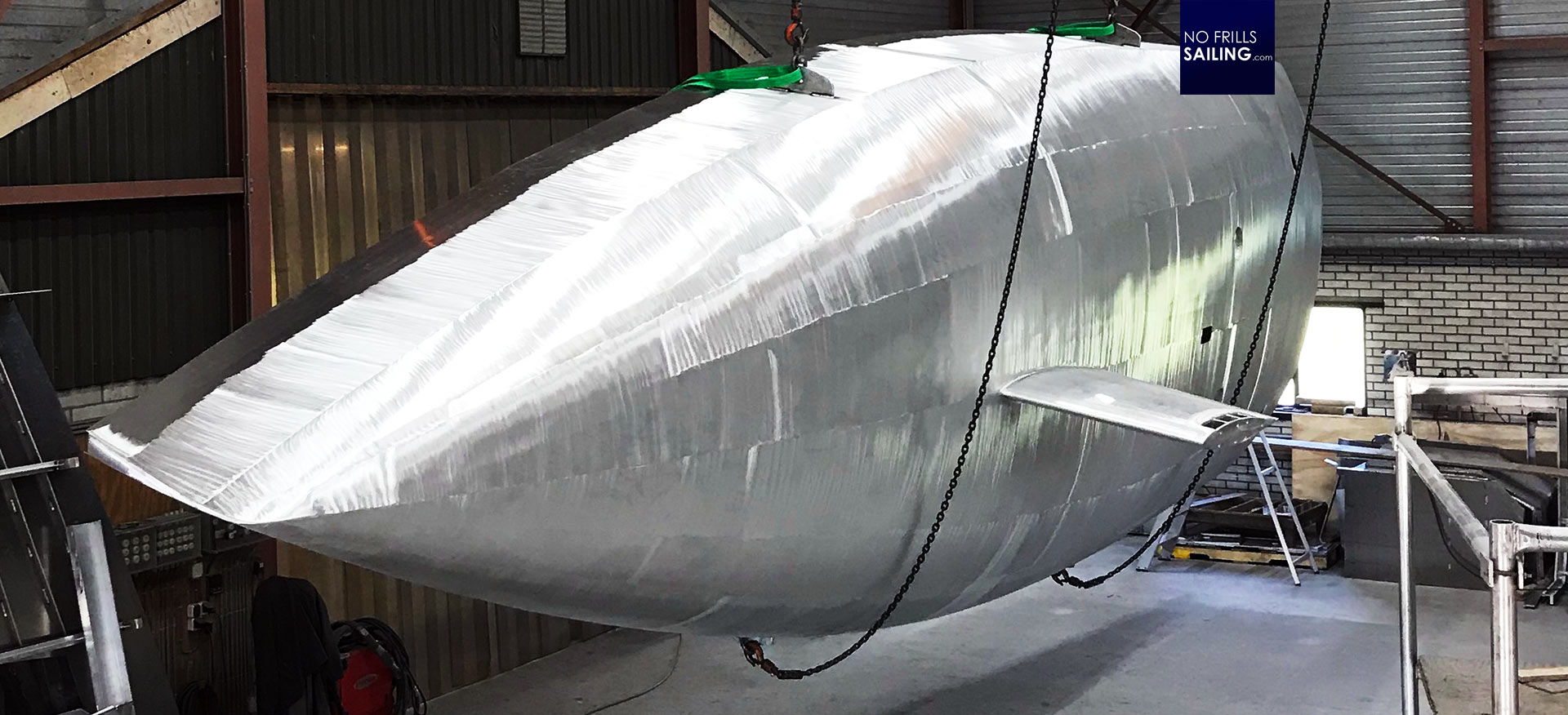
The boat´s hull had been finished these days and the turning of an aluminium hull in the yard may be comparable to taking out a freshly laminated GRP-hull from the mould. Big celebration. Since I know many of Martin´s designs and truly admire his work, seeing an inverted bow was a premiere for me. I asked why he chose to fit the BM36 with this feature: “Berckemeyer boats are custom build yachts. So incorporating the owner´s wishes into the designs is my job. This particular owner asked for it and I complied.” Rather that simple? There must be more to an inverted bow: Many contemporary boat designs do have a Dreadnaught-bow, racing boats in particular, even the large production-companies picked up the design, take the all-new Jeanneau 410 by Marc Lombard.
A rationale for inverted bows in modern yacht design
„From a yacht designer´s perspective I would say that there is no factual need to invert a stem for a heavy- to mid-displacement cruising yachts. There may be some reasons to incorporate such a feature on ultralight foiling boats or light and fast multihulls, but not on cruisers.”, says Martin: “I always fancied and still favor the vertical stem – waterline means boat length for me and this is how I always designed my boats.” Negative stems are more than a temporary fashion – it´s a concrete trend in boat building that is more and more gaining a foothold. “The boating business is selling an image to the clients. It has always been this way, much like carmakers do: Put a spoiler on a station wagon and it instantly becomes faster. At least it looks like it´s faster.” I must admit, I prefer the classic Berckemeyer design over the inverted bow, but even with me the effect works pretty well.
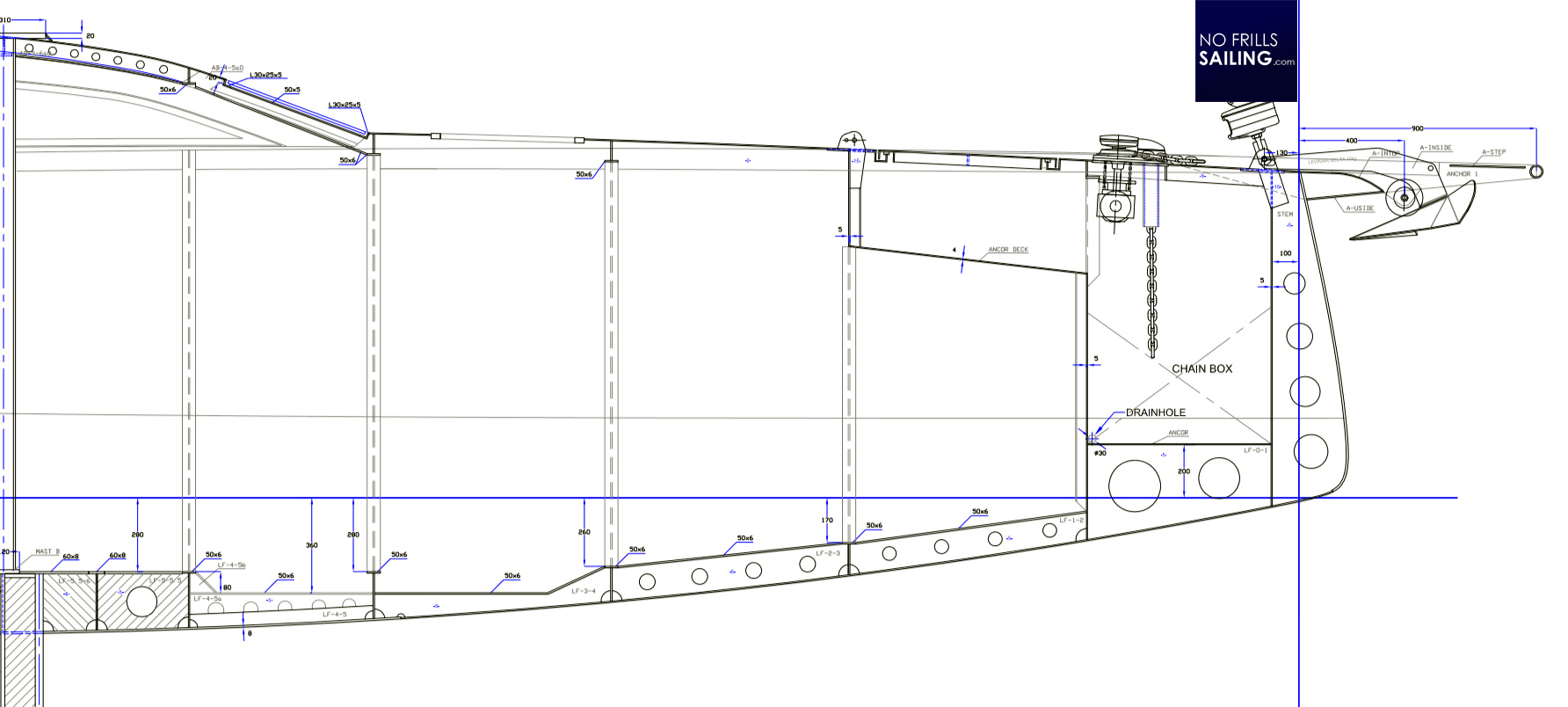
Martin provides me with a construction plan of the new BM36 and I study the lines: I cannot deny a certain aesthetical effect: “In essence you always try to sell an image. Every product does. With a boat, you try to please the eye of the customer. It´s the sportscar-effect: People are connecting words like performance, speed and power with pictures of these racing boats. Product designers are transferring those picture-features to cruisers. That´s the way it goes.” In yacht design, the negative stem was first re-introduced by the fast, planing Open-racing yachts, latest seen on these famous foiling IMOCAS. Like with Formula 1 cars, these fantastic racing machines instilled the people´s lust to having at least something from these high-tech machines transferred to their ordinary cruisers.
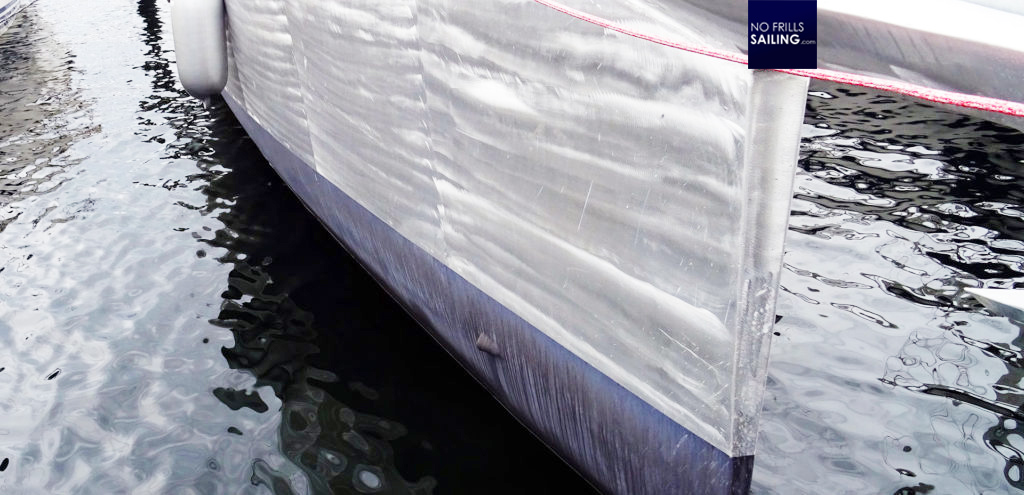
„For a cruiser a serious design brief would never contain such a feature. There are many other points far more important, when it comes to designing a boat made for long voyages.”, says Martin: “Like how the bow sprit is designed, how the anchor tackle is laid out, how you get on or off the boat when mooring bow-first and things like these. Moreover, some design features of a cruiser contradict the feature like a negative stem.” Martin points out that one requirement of a cruiser should be the easiness of quick, uncluttered and wide deck, especially in the front, calling for a wide sidewalk and thus a rectangular hull-deck-bond.
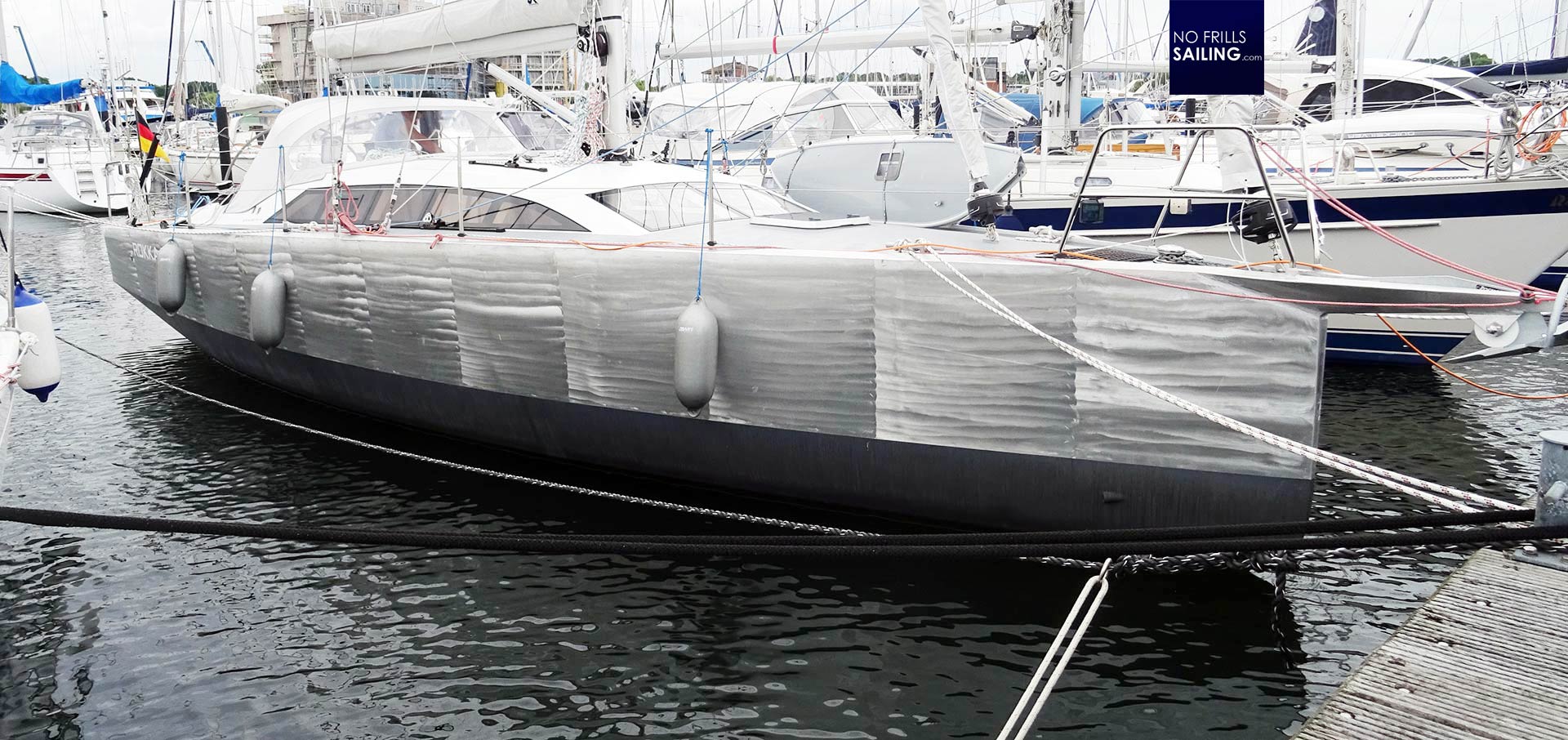
“This is why I normally design the Berckemeyer boats with straight up stems: Easy go-around on deck, more volume below.” But anyway, where does this fanciness for Dreadnaught bows come from and how and why did this feature become re-animated in yacht-design after the big battleships of World War 1 proved to be too wet in heavy seas and lacking reserve buoyancy, making the Navies of the world abandon this particular concept? Is it really just a fad?
Real advantages of inverted bows for sailing boats
Whilst on the new BM36 which is currently under construction the battleship-bow is a nice eye-catcher, a negative stem can have a real impact on a boat´s sailing performance, as it turns out: “When you take a look at the big Trimarans or the latest generation of America´s Cuppers you´ll see that these designs incorporate very fine entries, negative stems and reduced bow sections: Wave-piercing is the motto. Same goes for the big foiling racing yachts: When a boat “crashes” you want to avoid going under, getting stuck in the wave or even overturning. This is where an inverted bow absolutely makes sense. On one of my own designs I did incorporate the negative stem with joy and tried to squeeze out as much as I could.” That sounds interesting. “For the LA28 I had no implications like an easy go-around – the emphasis was purely on creating a nice looking boat that ought to be as fast as possible.”
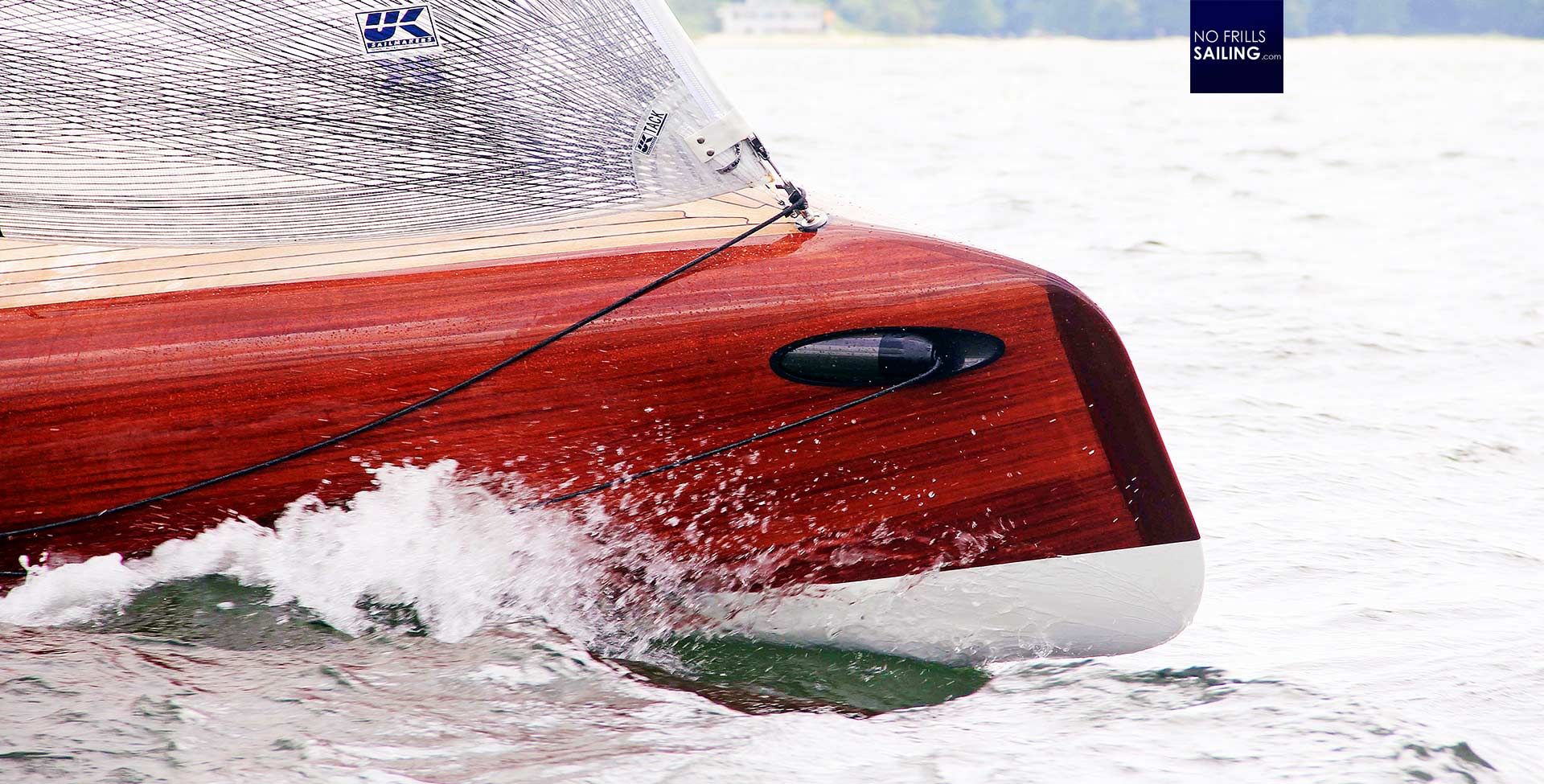
„The inverted stem plus a specially designed bow-section optimized the flow of air onto the jib sail. The effect is really perceptible and this is where a negative stem absolutely makes sense in terms of performance.” Martin explains that an uninterrupted airstream on the jib sail without interfering vortexes is the aim: “Every small swirl created by the boat, even the crew, is taking away advancing force. If you look at the bow of the LA28 you may notice that I´ve shaped away every unnecessary inch of material. I´ve created a smooth, rounded hull-deck-joint to make sure that the aerodynamic properties of the bow make the airstream as smooth as possible. Here is where an inverted bow in combination with corresponding hull-design pays off immensely.”

Which brings us back to the BM36 currently under construction. I congratulate the proud and probably happy owner to this boat: She is indeed a fine boat and will sail fast as hell, that´s sure. Not so much because of the bow-design, but because of Martin Menzner´s efforts in designing a stiff, hydrodynamically optimized hull. I kind of like the negative stem a bit more, now that I know where it came from and why it is there: I personally would prefer the classic style, mainly because I fancy this look over the negative stem (and would have a slightly bigger chain locker as well.

„It´s defintely not a short-lived fashion”, Martin says: “If you want to make a boat that will still look modern in a 10 or 15 years time from now, as a designer you have to go for at least an upright stem-design. Simply because this is how people perceive fast, sexy boats today.
There will be more boats like these, I am sure!
“I am sure we will see a lot more negative stem-boats in the future, and not just from the smaller companies but also ordinary cruiser-designs by the big production brands. It happened before, just remember the big fuzz around the chines. This is the same.” But these chines – that´s another story.
You may also like to read these articles on yacht design:
What makes a yacht seaworthy?
Matteo Polli on keel iterations for Italia Yachts
Stefan Qviberg on his work in Arcona Yachts
